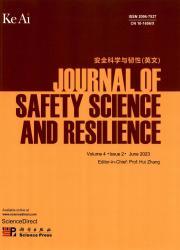Steganographic model to conceal the secret data in audio files utilizing a fourfold paradigm: Interpolation, multi-layering, optimized sample space, and smoothing
IF 3.4
Q1 PUBLIC, ENVIRONMENTAL & OCCUPATIONAL HEALTH
引用次数: 0
Abstract
Audio steganography techniques are evaluated using performance metrics such as payload capacity, stego audio file quality, and security (imperceptibility of hidden data). Increasing payload capacity often reduces stego image quality and security. However, maintaining high-quality stego audio with high imperceptibility requires compromising payload capacity. Therefore, achieving a balanced trade-off between payload capacity and stego audio quality has become essential but increasingly challenging. Current methods often lack adaptiveness, potentially compromising both embedding capacity and stego audio quality. To address these limitations, this study offers valuable insights to guide researchers in developing high-performing audio steganography models. The proposed method seeks to improve stego audio quality by implementing a smoothing-based technique and optimizing the sample space through linear interpolation, followed by a multi-layering process. Comprehensive experiments are conducted on common audio datasets to benchmark the method against state-of-the-art techniques. The results demonstrate peak signal-to-noise ratio (PSNR) values ranging from 105.14 to 126.34 dB, indicating substantial fidelity preservation compared to existing methods with PSNR values ranging from 120.55 decibel (dB) for 1 kb to 100.57 dB for 100 kb. These findings confirm the effectiveness of the model in maintaining audio quality while concealing data. Moreover, this study recommends that practitioners in steganography with audio data prioritize data concealment algorithms that enhance security over stego audio quality.
隐写模型,以隐藏秘密数据的音频文件利用四重范式:插值,多层,优化样本空间,平滑
音频隐写技术使用性能指标进行评估,如有效载荷容量、隐写音频文件质量和安全性(隐藏数据的不可感知性)。增加有效载荷容量往往会降低隐写图像质量和安全性。然而,保持高质量的隐音音频与高隐蔽性需要妥协的有效载荷能力。因此,实现有效载荷能力和隐音音质之间的平衡权衡已经变得必不可少,但越来越具有挑战性。目前的方法往往缺乏适应性,潜在地损害了嵌入容量和隐进音频质量。为了解决这些局限性,本研究为指导研究人员开发高性能音频隐写模型提供了有价值的见解。所提出的方法旨在通过实现基于平滑的技术和通过线性插值优化样本空间来提高隐进音频质量,然后进行多层处理。在常见的音频数据集上进行了全面的实验,以将该方法与最先进的技术进行比较。结果表明,峰值信噪比(PSNR)值为105.14 ~ 126.34 dB,与现有的PSNR值为1kb的120.55分贝到100kb的100.57分贝的方法相比,保真度保持得很好。这些发现证实了该模型在隐藏数据的同时保持音频质量的有效性。此外,本研究建议音频数据隐写的从业者优先考虑数据隐藏算法,以提高安全性而不是隐写音频质量。
本文章由计算机程序翻译,如有差异,请以英文原文为准。
求助全文
约1分钟内获得全文
求助全文
来源期刊

安全科学与韧性(英文)
Management Science and Operations Research, Safety, Risk, Reliability and Quality, Safety Research
CiteScore
8.70
自引率
0.00%
发文量
0
审稿时长
72 days
 求助内容:
求助内容: 应助结果提醒方式:
应助结果提醒方式:


